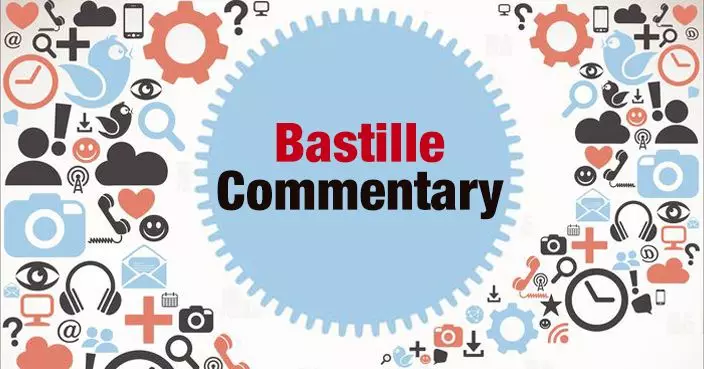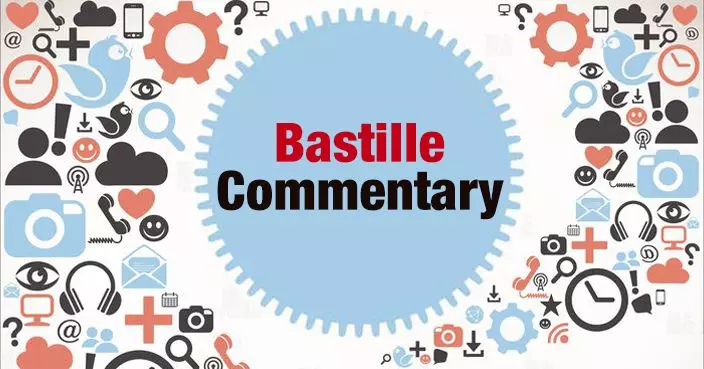SAN FRANCISCO--(BUSINESS WIRE)--Mar 26, 2025--
Motif, Inc., makers of the next-generation software platform for the modern built environment, today announced the launch of a groundbreaking cloud-based platform that enables seamless real-time collaboration for architecture and engineering teams. Designed to unify 2D and 3D workflows into a single platform, Motif eliminates the fragmentation that has plagued design review processes for decades. As the first step toward making the true vision of Building Information Modeling (BIM) a reality, Motif bridges the gap between disconnected tools and workflows, empowering teams to work more efficiently and intuitively than ever before.
This press release features multimedia. View the full release here: https://www.businesswire.com/news/home/20250326740027/en/
“Today’s AEC workflows are burdened by fragmented data, rigid software, and disconnected collaboration tools that slow down decision-making,” says Amar Hanspal, CEO and Co-Founder of Motif. “Motif is redefining BIM with a focus on being open, intelligent, and collaborative, where BIM isn’t just about managing information—it’s about unlocking intelligence. We’re starting with intelligent collaboration—a platform that bridges gaps between teams, integrates with existing tools, and leverages AI to provide insights that drive better decisions. This is step one of many in building a smarter, more connected BIM future—one that removes friction, enhances creativity, and makes design intelligence truly accessible.”
Addressing the Industry’s Biggest Collaboration Challenges
Design professionals use a range of tools like Revit, Rhino, and SketchUp for their work, yet most design reviewers and stakeholders lack access to these applications, making collaboration difficult. Existing whiteboard solutions lack critical features for architects (i.e., unit measurements, 3D viewing, etc.), while specialized BIM software is often inaccessible to key stakeholders who need to review designs. The result is delayed projects, miscommunication, and inefficient rework.
Motif is solving these challenges by introducing:
Motif is built for project teams that need to review designs efficiently, whether they are in the office or remote. Unlike existing tools that require expensive software licenses or complicated workflows, Motif operates entirely in the browser, allowing anyone to participate in design discussions—without requiring expertise in CAD or BIM applications.
"We designed Motif to work the way architects and engineers do—bringing together 2D and 3D content in an infinite canvas, enabling seamless collaboration, and ensuring every stakeholder has the ability to contribute meaningfully to the design process," continued Hanspal.
A New Era of Design Collaboration Begins
With its official launch, Motif is setting a new standard for design review and presentation in the built environment. Motif creates a new category by combining general collaboration capabilities with specialized review technical needs, while adding unprecedented integration with design tools that, until now, has not been available on the market. This strategic integration preserves the design team's workflow while eliminating communication barriers between technical designers and other stakeholders, creating a unified design ecosystem without disrupting established processes.
"Motif simplifies how we collaborate across teams,” said Bill Carney, Design Technology Leader and Principal at DLR Group. “Instead of juggling screenshots, PDFs, and disconnected markups, everything is now in one place—live, structured, and effortless. Instead of creating work-arounds to collaborate we can focus on decisions and feedback in real time. Motif has made coordination faster and eliminated so many back-and-forths."
Motif’s vision for BIM doesn’t stop at collaboration. Motif 1.0 is just the first step toward building the future of data-driven modeling, automated documentation, and AI-powered insights—with speed, scalability, and openness at the core.
The platform is available now for early adopters, with flexible pricing plans tailored for small teams, mid-sized studios, and large enterprises. To experience the future of architectural design collaboration, visit motif.io to request access and start your free trial.
About Motif
Motif Systems, Inc. is building the next generation software platform for the modern built environment. Founded in 2023 by Amar Hanspal (former Co-CEO and Chief Product Officer at Autodesk) and Brian Mathews (former CTO at Autodesk), along with founding employees of Revit, Motif enables seamless, real-time collaboration for architecture, engineering, and construction professionals. Motif has raised $46 million in funding led by Redpoint Ventures and CapitalG. For more information, visit motif.io.


Motif, Inc., makers of the next-generation software platform for the modern built environment, has launched a groundbreaking cloud-based platform that enables seamless real-time collaboration for architecture and engineering teams. Designed to unify 2D and 3D workflows into a single platform, Motif eliminates the fragmentation that has plagued design review processes for decades. As the first step toward making the true vision of Building Information Modeling (BIM) a reality, Motif bridges the gap between disconnected tools and workflows, empowering teams to work more efficiently and intuitively than ever before.
VATICAN CITY (AP) — Preparations for the conclave to find a new pope accelerated Friday with the installation of the chimney out of the Sistine Chapel that will signal the election of a successor to Pope Francis.
Vatican firefighters were seen on the roof of the Sistine Chapel installing the chimney, a key moment in the preparation for the May 7 conclave.
After every two rounds of voting in the Sistine Chapel, the ballots of the cardinals are burned in a special furnace to indicate the outcome to the outside world.
If no pope is chosen, the ballots are mixed with cartridges containing potassium perchlorate, anthracene (a component of coal tar) and sulfur to produce black smoke. But if there is a winner, the burning ballots are mixed with potassium chlorate, lactose and chloroform resin to produce the white smoke.
The white smoke came out of the chimney on the fifth ballot on March 13, 2013, and Cardinal Jorge Mario Bergoglio was introduced to the world as Pope Francis a short time later from the loggia of St. Peter's Basilica. Francis, history's first Latin American pope, died April 21 at age 88.
The chimney installation took place as cardinals arrived in the Vatican for another day of pre-conclave discussions about the needs of the Catholic Church going forward and the type of pope needed to run it.
These consultations include all cardinals, including those over age 80 who are ineligible to vote in the conclave itself.
In recent days, they have heard reports about the Vatican’s dire financial situation, and have had the chance to speak individually about priorities going forward and problems they identified in Francis' pontificate.
Francis was a somewhat divisive pope, beloved by some for his focus on the poor and marginalized, but criticized by others who accused him of sowing confusion among the faithful on issues of morality and church law. These conservatives and traditionalists, who are not believed to have a majority among the 135 cardinal electors, are hoping a new pope will reassert core church teachings and act as a stabilizing figure in the Vatican bureaucracy.
Cardinal Beniamino Stella, who headed the Vatican office for clergy under Francis until his retirement in 2021, has been among the older, non-voting cardinals who has spoken during the pre-conclave sessions. According to America, the magazine of the U.S. Jesuits, Stella this week strongly criticized Francis’ reform of the Vatican bureaucracy that allowed women and lay people to head Holy See offices rather than clergy.
That reform, contained in a 2022 constitution, overhauled the Vatican bureaucracy and fulfilled a key mandate Francis received from cardinals going into the 2013 conclave that elected him pope. But some have criticized the reform, which was nine years in the works and sought to make the Holy See more service-oriented and efficient.
Francis named two laymen to head the Vatican communications operation and the economy ministry. More significantly, he named two nuns to head two of the most important Vatican offices: Sister Simona Brambilla as head of the Vatican office responsible for all the world’s Catholic religious orders, and Sister Raffaella Petrini as head of the Vatican City State administration. In that position, Petrini runs the city state and is responsible for everything from the Vatican Museums that provide the Holy See with most of its revenue, to the firefighters who installed the chimney on the Sistine Chapel Friday.
Their appointments were tangible evidence of Francis’ belief that women should have a greater decision-making role in church governance. But Stella, according to unnamed cardinals cited by America, objected to Francis’ decision to separate the power of governance in the church from the priesthood.
It is unclear what influence older cardinals such as Stella, who at age 83 will not actually cast a vote, will have on the younger cardinal electors. In general, cardinals of the more conservative old guard have stresesed the need for unity over pursuing Francis' more radical legacy.
“The pope has to ensure the unity of all of the church," said Cardinal Fernando Filoni, the retired head of the Vatican's evangelization office. "This is first and foremost. Everything else comes after,” the 79-year-old cardinal said as he arrived Friday for the pre-conclave discussions.
Cardinal Fernando Natalio Chomali Garib, the 68-year-old archbishop of Santiago, Chile, said the variety of points of view was useful in the pre-conclave meetings. Francis made Chomali a cardinal in December after appointing him to head the Chilean church through the continued fallout of the clergy sexual abuse scandal.
“For me, that I come from Chile, a far away country, hearing such different experiences is an enrichment, not only for me but for all of the church,” he said as he entered Friday.

A woman begs for money outside St. Peter's square at the Vatican, Friday, May 2, 2025. (AP Photo/Gregorio Borgia)

Firefighters place the chimney on the roof of the Sistine Chapel, where cardinals will gather to elect the new pope, at the Vatican, Friday, May 2, 2025. (AP Photo/Gregorio Borgia)

Firefighters place the chimney on the roof of the Sistine Chapel, where cardinals will gather to elect the new pope, at the Vatican, Friday, May 2, 2025. (AP Photo/Gregorio Borgia)

Firefighters place the chimney on the roof of the Sistine Chapel, where cardinals will gather to elect the new pope, at the Vatican, Friday, May 2, 2025. (AP Photo/Gregorio Borgia)

Firefighters place the chimney on the roof of the Sistine Chapel, where cardinals will gather to elect the new pope, at the Vatican, Friday, May 2, 2025. (AP Photo/Gregorio Borgia)

Firefighters place the chimney on the roof of the Sistine Chapel, where cardinals will gather to elect the new pope, at the Vatican, Friday, May 2, 2025. (AP Photo/Bernat Armangue)

Firefighters place the chimney on the roof of the Sistine Chapel, where cardinals will gather to elect the new pope, at the Vatican, Friday, May 2, 2025. (AP Photo/Bernat Armangue)

Firefighters place the chimney on the roof of the Sistine Chapel, where cardinals will gather to elect the new pope, at the Vatican, Friday, May 2, 2025. (AP Photo/Gregorio Borgia)

Firefighters place the chimney on the roof of the Sistine Chapel, where cardinals will gather to elect the new pope, at the Vatican, Friday, May 2, 2025. (AP Photo/Gregorio Borgia)

FILE - Visitors admire the Sistine Chapel inside the Vatican Museums on the occasion of the museum's reopening, in Rome, May 3, 2021. (AP Photo/Alessandra Tarantino, file)































































